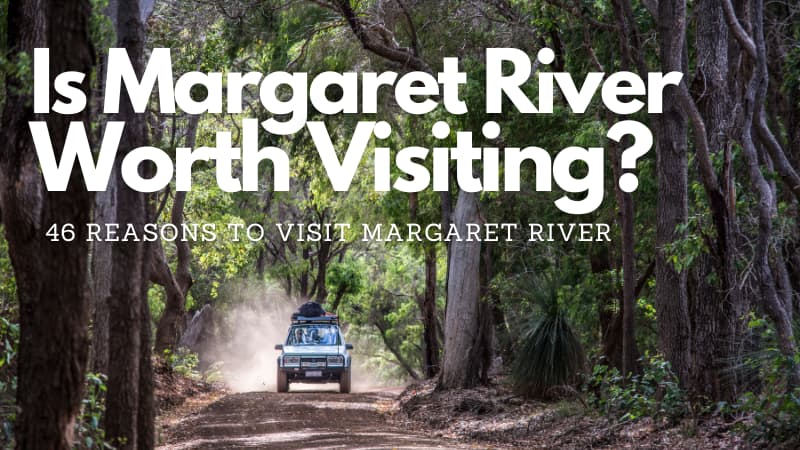Traditional Owners: Amangu Peoples
Located just two and a half hours north of Perth, Lesueur National Park is a nature lover’s paradise! It’s home to over 900 plant species which make up a whopping 10% of Western Australia’s known plants.
In spring, the rolling hills of Lesueur National Park come alive with colour as the wildflowers bloom. There’s plenty to see and discover at Lesueur National Park, from fantastic bushwalks to stunning views from Mount Lesueur.
Personally, Lesueur is one of my favourite National Parks in Western Australia and the Yonga Trail is one of my favourite hikes in the region. I want to share all my top tips to make sure you have a fantastic day out at Lesueur National Park.
How to Get to Lesueur National Park
There are two main routes to get from Perth to the park and both will take roughly 2.5 hours. Note: there is a dirt road part of the way as you get close to the park, however, it is well-packed and easy for 2WD vehicles to traverse.
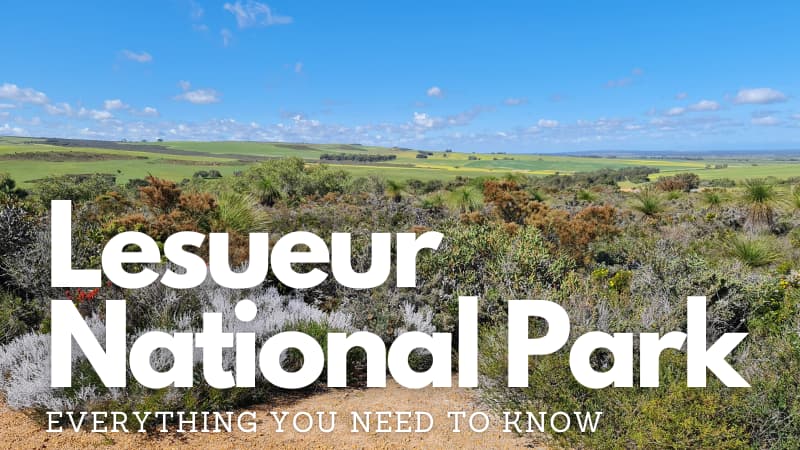
One option is to drive north on Indian Ocean Drive until you reach Cervantes, from there take a right turn onto Cervantes Road, followed by a left turn onto Munbinea Road, continuing until you reach the Park entrance. This route follows the coast and you’ll see some stunning glimpses of the ocean along the way.
Option two is to take the inland route, head north on Brand Highway before making a left turn onto Bibby Road then right onto Munbinea Road which will take you to the entrance. This route also offers some scenic views along the way.
10 Best Things to Do at Lesueur National Park
Lesueur National Park is a fantastic spot for anyone who loves the great outdoors, there’s something for everyone to enjoy in the area. Here are 10 of the best activities:
1. Bush Walking
Bushwalking is a must-do at Lesueur National Park! There’s a range of trail types to suit everyone, from newbies to experienced hikers.
Top Tip!
The soil-borne water mould, Dieback, is a serious threat to the flora in the park. Make sure you use the boot-cleaning stations at the start of the trails to keep the park disease-free.
Yonga Trail
Length: 26 km loop
Duration: around 8 hours or overnight
Trail Marker: Green
Class: 4
The Yonga Trail at Lesueur National Park is one of my personal favourite hikes in Western Australia – It’s a good distance at 26 km and the steep sections are just challenging enough to make you feel like you’ve earned the stunning views.
The Yonga Trail starts from the Drummond Recreation Site and can be completed in one day by experienced hikers or can be split over two days with an overnight stay in the campground.
The trail takes you through plenty of varied landscapes – through wandoo woodlands and open heathlands and past ridges. There are some steep ascents and the path can be a little loose in sections, but is generally clear and well-defined. Keep in mind there isn’t much shade on this route, so make sure you’ve got the sunscreen and hat on those summer months.
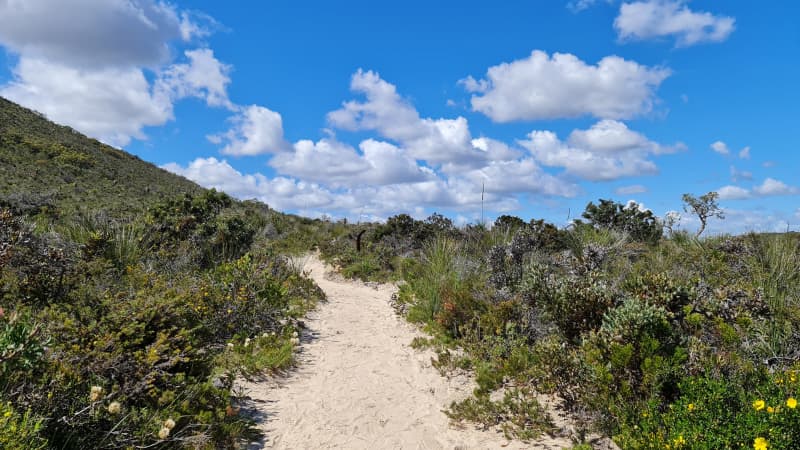
If you choose to complete the hike in two days, you can stop at the Yonga Campground, which is 12 km into the hike (or 14 km if you take the anticlockwise direction). Here you’ll find 3 tent platforms that sleep up to 4 people and a small shelter. There are also toilets, picnic tables and an untreated rainwater tank. Camping is for one night only and can be booked and paid for at the Parkstay website. Remember to bring your own drinking water and campfires are not allowed at any time. Camping is only allowed on the platforms or in the shelter so make sure you book in advance.
Yued Ponar Trail
Length: 6 km loop
Duration: 1-3 hours
Trail Marker: Pink
Class: 4
Unlike the other hikes on this list, the Yued Ponar Trail starts at the Cockleshell Gully picnic area which can be reached via Cockleshell Gully Road.
The path winds through wandoo woodlands and heathlands. You’ll walk along winding creeks and make it up to Mount Peron. Here you’ll be rewarded with amazing views of the national park and the Indian Ocean.
You’ll see information along the way that will give you an insight into the lives and traditions of the Yued Noongar peoples.
Mt Lesueur Trail
Length: 4 km return
Duration: 1-3 hours
Trail Marker: Orange
Class: 3
Again starting from Drummond Recreation Area, the Lesueur trail follows the Gairdner Trail in a south-west direction.
The trail begins relatively flat through sandy terrain before making an incline up the slopes of Mount Lesueur. There are some narrow and steep sections but once you make it to the top you’re rewarded with sweeping views out over the scrub and you can even see the Indian Ocean off in the distance – it makes the hike well worth it!
When you’re done soaking up the views head back along the way you came for the return trip.
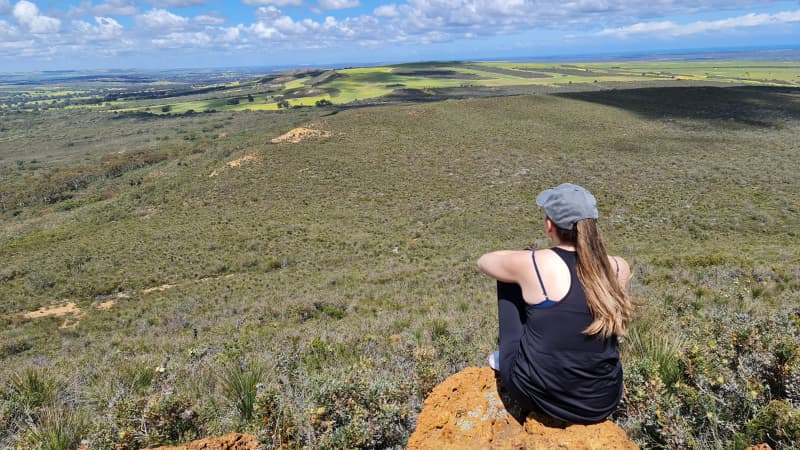
Gairdner Trail
Length: 2.5 km loop
Duration: 1.5 hours
Trail Marker: Purple
Class: 3
The Gairdner Trail is a shorter walk that also begins from the Drummond Recreation Area. You’ll first make it to the Ian Wilson Lookout point before continuing through Wandoo woodlands and Kwongan Heath.
Follow the trail markers to complete the loop and end up back at the recreation area.
2. Take the Lesueur Scenic Drive
The Lesueur Scenic Drive is an 18.8km loop through the national park that takes you past some of the main sights. The road is one-way and is sealed so it is suitable for all vehicle types.
The entry to the loop is off Cockleshell Gully Road and is well-signed. There are regular places to stop the car on the loop and it will take you past the Ian Wilson Lookout, the Drummond Recreation Area, Cockleshell Gully Picnic Area and a lookout point before exiting further up on Cockleshell Gully Road.
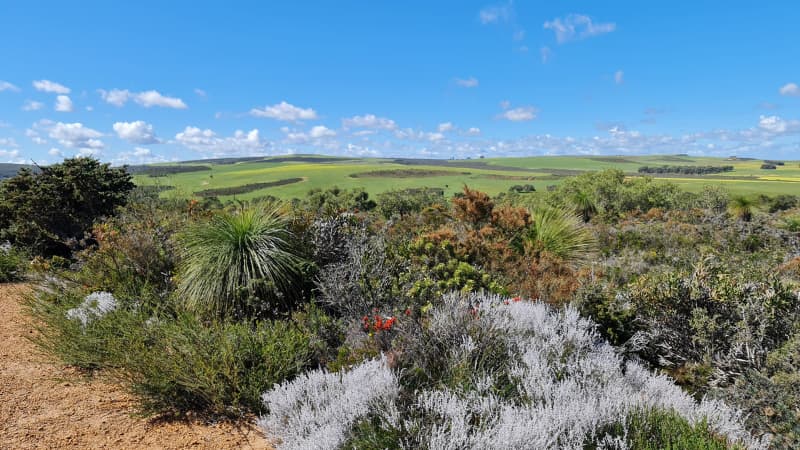
It’s well worth doing the drive – you’ll see some pretty spectacular scenery, be able to take some great photos and check out the diverse plant life.
3. Check out Drummonds Recreation Area
Drummonds marks the starting point for most of the hikes within the park. It’s a recreation area and a good place to stop for views of the park. There is car parking and toilets available.
Make sure you check out the Botanical Path, a 400 m wheelchair-accessible trail that leads from the carpark to the Iain Wilson Lookout. You’ll see some signs along the way that point out the significance of some of the native plant species.
4. Spot the Local Wildlife
Exploring Lesueur National Park, you’ll have the chance to spot some uniquely Australian wildlife that call the park home. It’s one of the state’s richest native mammal habitats so lucky visitors will have the chance to spot dunnart, bats, and honey possums. You may even catch some of the 41 lizard species including geckos and legless lizards.
There are also 11 snake species native to the park, some of which are venomous, so stay aware of where you’re treading, wear appropriate footwear and long pants and be aware of general snake safety tips.
5. Enjoy panoramic views from Mount Lesueur
Hike up Mount Lesueur on the Mt Lesueur Trail and you’ll be rewarded with spectacular views that span all the way to the Indian Ocean!
This is a great spot to stop for a packed picnic lunch and some stunning nature photography. Just be sure to take all your rubbish with you.
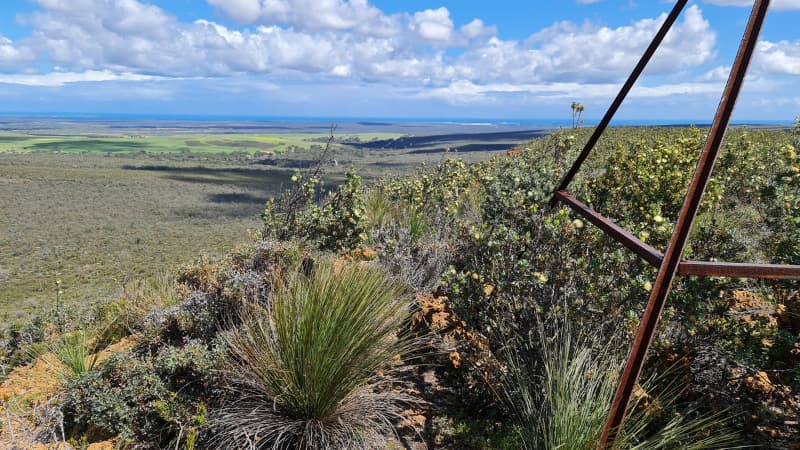
6. See the wildflowers
Lesueur National Park is a biodiversity hotspot due to its varied topography, soil types and geology. It’s home to over 900 plant species, 9 of which are found nowhere else in the world. Therefore, it’s no wonder that Lesueur National Park is a fantastic place to see the wildflowers bloom in springtime!
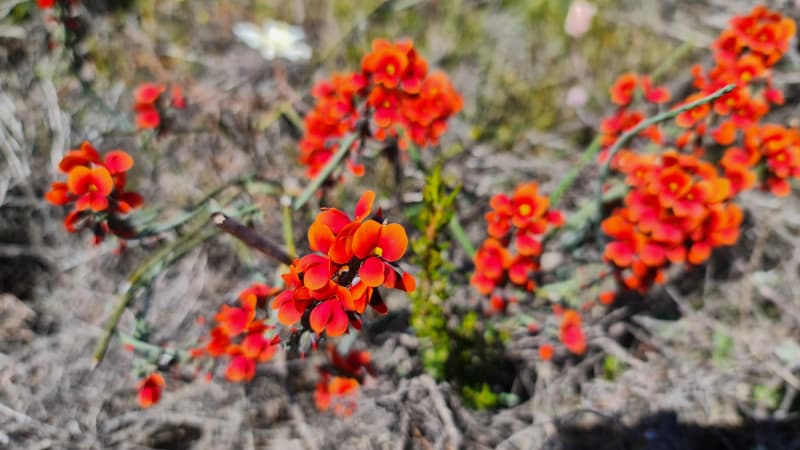
Take one of the bush walks through the park to take in all the vibrant colours up close. Alternatively, you can take the scenic drive – just make sure you stop at the lookout points to get some great snaps of the blooms.
Remember that picking wildflowers isn’t allowed – leave them for others to enjoy!
7. Explore Cockleshell Gully
Cockleshell Gully is a picnic area that is towards the end of Lesueur Scenic Drive. There’s parking and a trail that’s wheelchair accessible leading down to the gully picnic area.
The picnic area is in a woodland setting and has wheelchair-accessible toilets and picnic tables. It is also where the Yued Ponar trail begins and ends.
8. Camp at Karda Reserve
If you can’t get enough of Lesueur National Park why not spend the night close by? Karda Campground is just a 20-minute drive from the park.
Here you’ll be able to camp amongst green rolling hills and enjoy beautiful views of the land that was once a property. It’s suitable for both tent and caravan campers. Facilities include toilets, fire pits and picnic tables. Campsites can be booked online and fees are $11 per adult ($7 concession) and $3 per child.
Just note, the campground is closed during summer due to the heat.
For more places to stay around the area, check out my Guide to Jurien Bay Accommodation.
8. Go Birdwatching
Lesueur National Park is home to over 100 species of birds, who rely on the flora for survival and vice versa.
Keen ornithologists will be able to spot varieties such as fairy-wrens, honeyeaters, thornbills, southern emus and calamanthus, among many, many others – so don’t leave the binoculars at home!
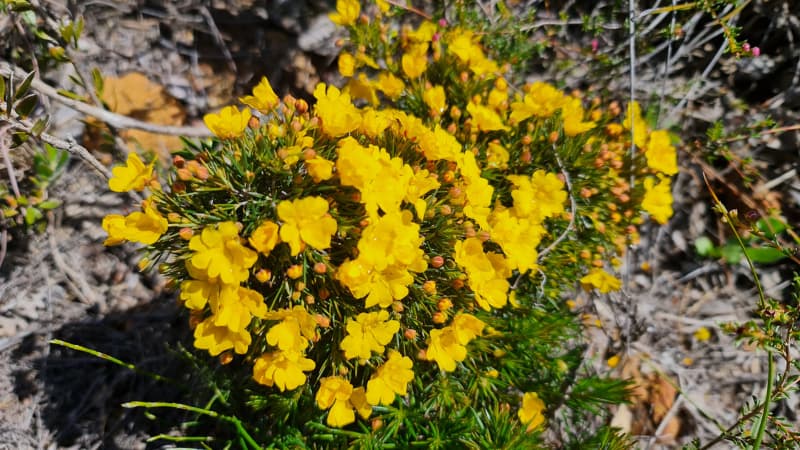
9. Have a picnic
Pack yourself a tasty picnic and take advantage of the two dedicated picnic spots: Drummonds and Cockleshell Gully to enjoy your well-earned lunch after your big hike or drive. You’ll feel truly refreshed kicking back in nature!
Just remember to take any rubbish with you to keep this area pristine.
Are dogs allowed at Lesueur National Park?
No dogs or pets are allowed at Lesueur National Park.
Lesueur National Park Entry Fees
Standard park fees apply at Lesueur National Park:
| Vehicle Type | Standard | Concession |
| Standard vehicle (12 or fewer occupants) | $15 per vehicle | $8 per vehicle |
| Large Vehicle (More than 12 occupants) | $7 per person | $2.5 per person |
| Motorbike | $8 | No Concession |
Fees can be paid at the Lesueur Entry Station. You’ll also find handy information signs here.
Lesueur National Park facilities
Throughout the national park you’ll find the following facilities:
- Public toilets
- Picnic areas with tables
- Carpark
- Lookout decks
- Some wheelchair-accessible paths
Top Tip!
There is no drinking water in the park – be prepared with your own.
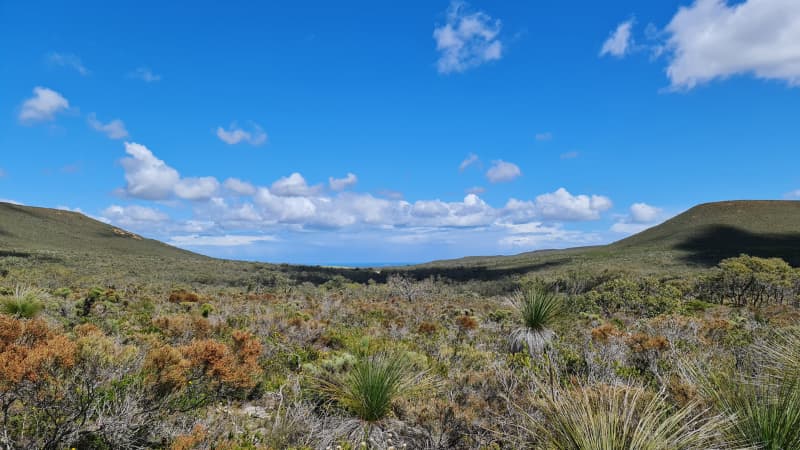
Best Time to Visit Lesueur National Park
The Best time to visit Lesueur National Park is during wildflower season. In Western Australia, wildflower season runs from August to October (depending on rainfall) and Lesueur is one of the best places in the state to enjoy the colourful blooms.
Outside of wildflower season the park is still worth a visit for its unique plant species, but just be prepared for hot and dry conditions if visiting during summer and be aware that there isn’t much shade or sun protection.
Lesueur National Park Safety
- Always let someone know where you are going and when you’re expected to return
- Hiking on hot and windy days is not recommended due to risk of bushfires
- Wear sturdy shoes
- Be sun-smart, wear a hat, sunscreen, sleeves and sunglasses
- Carry enough drinking water – at least 1 litre per person per hour – there is no drinking water available in the park
- Drink plenty of water, even on cool days to avoid dehydration
- There can be ticks – stay on the trail and avoid walking through scrub, wear long pants and remember to check yourself regularly
Where to Stay Near Lesueur National Park
Here are some options if you’re looking for somewhere to stay on your Lesueur trip:
Jurien Bay Tourist Park
Jurien Bay Tourist Park is my personal top pick when visiting the area. Located just 20 minutes from the park, it’s just a short walk from Jurien Bay beach and the self-contained cottages are comfortable and clean. They have everything you need for a simple weekend getaway: air conditioning, fridge, stovetop, microwave, kettle, toaster, free Wifi, balcony and private bathroom.

The Heights Bed and Breakfast
The Heights Bed and Breakfast is located on a secluded property, just 23 minutes from Lesueur National Park. The beds are comfortable and rooms come equipped with a private bathroom, ceiling fans and free WIFI. Plus, you’ll be served a tasty cooked breakfast each morning!

For more details on the best places to stay in the area, check out my Guide to Jurien Bay Accommodation.
Last Words on Lesueur National Park
Lesueur National Park is a fantastic destination for anyone interested in Western Australia’s unique flora, or for anyone who just loves a good hike. With its stunning wildflowers, varied walk trails, interesting land formations and breathtaking coastal views, the park offers an unforgettable experience for everyone. Lesueur National Park is a must on your next trip to Australia’s Coral Coast.
If you’re looking for more great national parks in Western Australia, why not check out Walyunga National Park, Lesmurdie Falls National Park or Bells Rapids?


